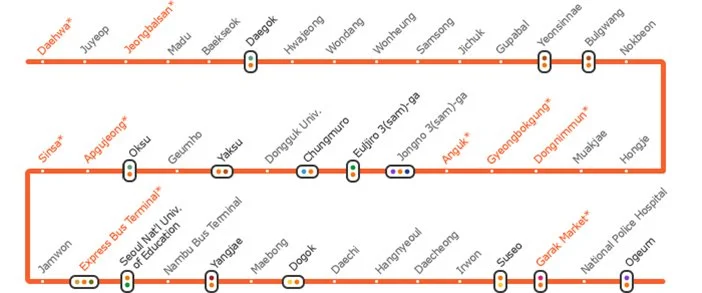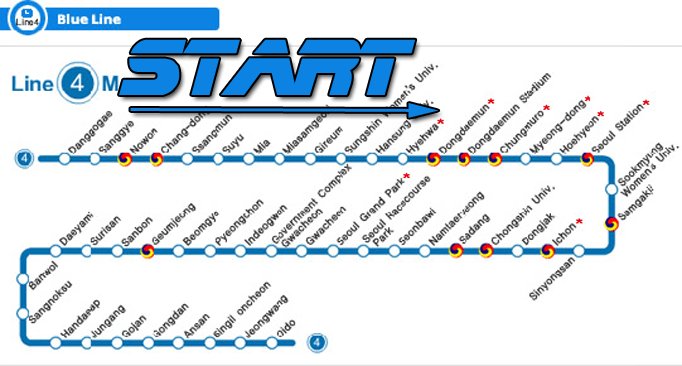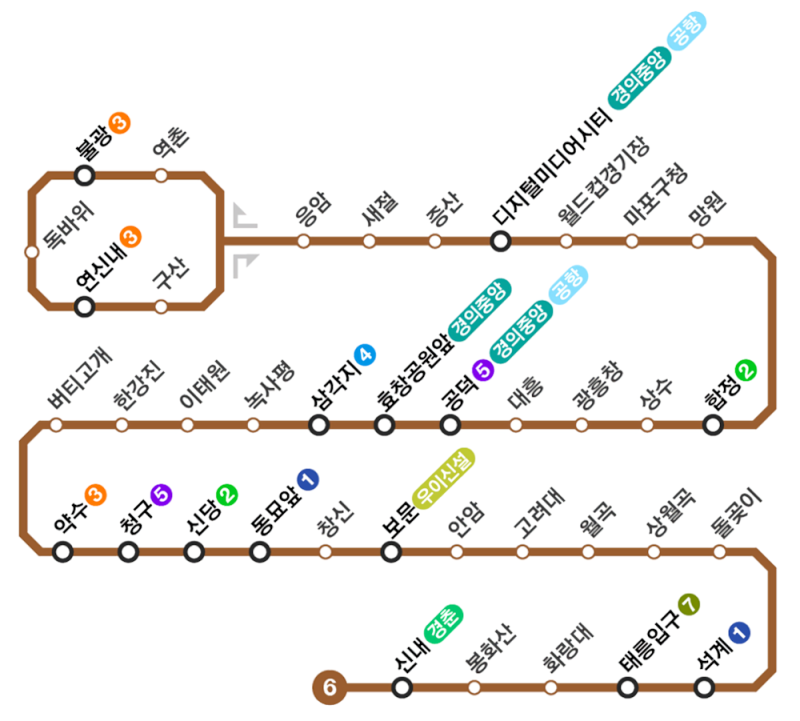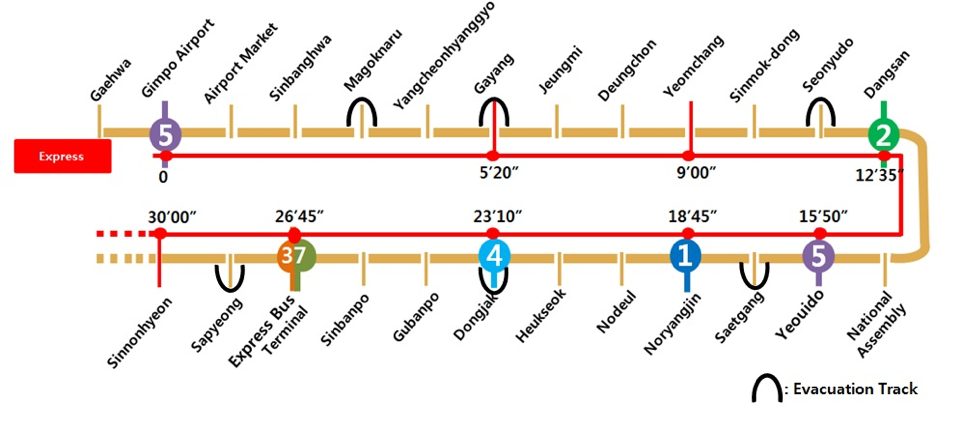Seoul Subway Lines
Discover everything you need to know about the Seoul Subway Lines.
From Line 1 to Line 9, fares, transfers, and travel tips. Navigate Seoul’s metro like a local with this detailed guide.
Understanding the Seoul Subway System
The Seoul Subway System is one of the world’s most advanced public transportation networks, covering the capital and its surrounding regions. Serving more than 9 million passengers daily, it’s clean, punctual, and incredibly efficient. Since its launch in 1974, Seoul’s subway has grown to include 24 lines that connect downtown Seoul to Incheon, Gyeonggi, and beyond.
A Brief History of the Seoul Metro
The system began modestly with Line 1. Over time, new lines were built to reduce congestion and support rapid urbanization. By the early 2000s, Seoul’s subway became a model of modern transit infrastructure. Equipped with digital displays, Wi-Fi, and universal accessibility features.
Who Operates the Subway System?
The Seoul subway network is jointly operated by several entities:
Seoul Metro (Lines 1–8)
Korail (parts of Lines 1, 3, and 4, plus regional lines)
Metro 9 Corporation (Line 9)
AREX Corporation (Airport Railroad)
All are seamlessly integrated through a unified fare system, ensuring smooth transfers across operators.
Overview of the Major Seoul Subway Lines
The Seoul subway lines are color-coded and numbered, making it easy to navigate even for first-time visitors. Below is a quick overview of the most popular lines.
Line 1 (Dark Blue Line)
As the oldest line, Line 1 connects Incheon to Soyosan, passing major stops like Seoul Station, City Hall, and Dongdaemun. It serves as a vital north-south artery and links to intercity rail lines.
If you go to Suwon or Incheon from Seoul, be careful. Not every subway from line 1 goes to either and you have to transfer at Guro.
Line 2 (Green Line)
The circular “loop” line connects key city hubs like Hongdae, Gangnam, and Euljiro. It’s the busiest and most versatile route. Ideal for sightseeing and commuting alike.
Line 3 (Orange Line)
This line stretches from Daehwa in the north to Ogeum in the south. It connects Gyeongbokgung Palace, Apgujeong, and Yangjae, blending cultural and business destinations.
Line 4 (Light Blue Line)
Running through central Seoul, Line 4 connects Myeongdong and Dongdaemun. It’s popular among tourists for its access to famous shopping districts and amusement parks.
Line 5 (Purple Line)
An east-west connector, Line 5 runs underneath the Han River and links Gimpo Airport to Gangdong-gu. It’s known for efficient travel across the city without transfers.
Line 6 (Brown Line)
Often overlooked by tourists, Line 6 serves local neighborhoods and military bases in northern Seoul. It passes through Itaewon, Hapjeong, and Bonghwasan, making it great for nightlife and cultural exploration. The line connects seamlessly with Lines 2, 3, and 5, making transfers easy.
Highlights:
Itaewon Station: Known for international food and expat nightlife.
Gyeongridan & Haebangchon: Access via nearby stations.
World Cup Stadium Station: Gateway to Sangam-dong and Seoul’s digital media hub.
Line 7 (Olive Green Line)
Running northeast to southwest, Line 7 links Jangam to Bupyeong-gu Office in Incheon. It’s particularly useful for residential areas and connects with Lines 1, 2, 3, 5, and 9.
Highlights:
Cheongdam Station: Upscale shopping and cafes.
Express Bus Terminal: Transfer hub for long-distance buses.
Gwangmyeong Intersection: Expanding access to western Seoul suburbs.
Line 8 (Pink Line)
Line 8 runs from Amsa in the northeast to Moran in the south, linking Seoul with Seongnam. It’s less crowded but extremely useful for reaching the southeastern districts and satellite cities.
Highlights:
Amsa Station: Near ancient Amsa-dong Prehistoric Settlement Site.
Jamsil Station (Transfer to Line 2): Lotte World, shopping, and entertainment.
Moran Station: Famous for traditional markets and access to Bundang.
Line 8 is ideal for commuters living south of the Han River and travelers seeking less congested routes.
Line 9 (Gold Line)
Known as Seoul’s express line, Line 9 connects Gimpo Airport to COEX Mall and Gangnam. Express trains skip smaller stops, cutting travel times significantly. It’s the go-to for quick airport transfers or cross-city travel.
Suburban and Airport Lines
AREX (Airport Railroad Express)
The AREX Line provides direct access from Incheon International Airport to Seoul Station. You can choose between the express (43 minutes) or all-stop (59 minutes) services.
Bundang, Suin, and Gyeongui–Jungang Lines
These suburban commuter lines connect Seoul to cities like Suwon, Seongnam, and Ilsan, serving as vital routes for daily commuters.
Fares, Cards, and Transfers
Using a T-Money
These rechargeable smart cards are accepted across subways, buses, and even taxis. You can purchase and top them up with cash at convenience stores or ticket machines. Now there are also machines that take cards. It didn’t work with my visa and mastercard but worked with the wowpass.
Free Transfers and Fare Zones
Seoul’s distance-based fare starts at ₩1,550. Transfers between buses and subways are free within a 30-minute window (except after midnight).
Technology and Cleanliness
Seoul’s metro is world-renowned for its cleanliness, punctuality, and smart infrastructure. Digital displays show real-time train info in multiple languages, while Wi-Fi and phone charging stations are standard amenities.
Accessibility and Inclusivity
Every station includes elevators, ramps, Braille maps, and priority seating. Seoul’s government continues to expand accessibility programs for seniors and people with disabilities.
Hidden Gems on the Seoul Subway
Many stations feature art installations and underground malls.
Gwanghwamun Station hosts exhibitions.
Jamsil Station connects to Lotte World Mall.
Itaewon Station links to Seoul’s global dining scene.
Subway Etiquette in Seoul
Koreans take subway etiquette seriously. Keep your voice low, avoid eating, and stand aside for disembarking passengers. Seats for the elderly and pregnant women are reserved, even when empty.
Tourist-Friendly Stations and Attractions
| Station | Line | Nearby Attraction |
| Myeongdong | Line 4 | Shopping & Street Food |
| Hongdae | Line 2 | Nightlife |
| Itaewon | Line 6 | Global Cuisine & Bars |
| Gyeongbokgung | Line 3 | Royal Palaces & Museums |
| Dongdaemun | Lines 1 & 4 | Fashion Markets |
| Gangnam | Lines 2 & 9 | K-Pop & Tech Hubs |
FAQs About the Seoul Subway Lines
Q1. What’s the best line for tourists?
A1. Line 2 (Green Line) and Line 4 (Light Blue Line) are the best for sightseeing, covering most major landmarks and shopping areas.
Q2. Can I use one card for all lines?
A2. Absolutely. The T-Money card works across all subway lines, buses, and even regional trains.
Q3. How safe is the subway at night?
A3. Very safe. Seoul’s subway is monitored all the time, and stations are well-lit with frequent patrols.
Q4. Are there English announcements?
A4. Yes, every train and station provides announcements in Korean, English, Chinese, and Japanese.
Q5. When do the trains start and end?
A5. The first trains depart around 5:30 AM, and the last trains leave between 11:30 PM and midnight. On the weekends they stop earlier than on the weekdays.
Q6. Is Wi-Fi available underground?
A6. Yes, free high-speed Wi-Fi is available on trains and platforms citywide.
Conclusion
The Seoul Subway Lines form the beating heart of the city. Fast, affordable, and impressively clean. Whether you’re exploring ancient palaces, trendy neighborhoods, or business hubs, Seoul’s metro makes it effortless to travel like a local. From Line 1’s historic roots to Line 9’s modern speed, every journey tells a story about Seoul’s growth and innovation.
For maps, schedules, and updates, visit Seoul Metro’s Official Website.









